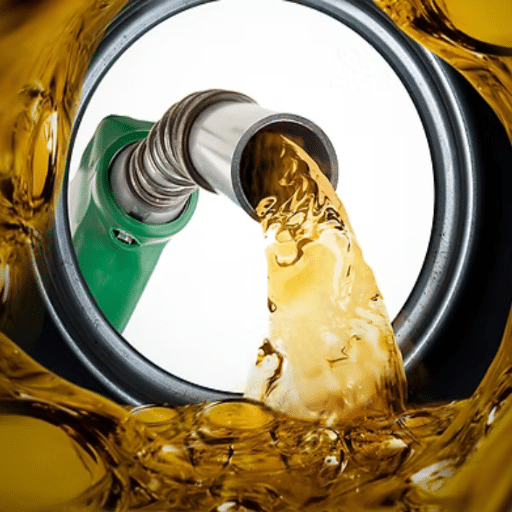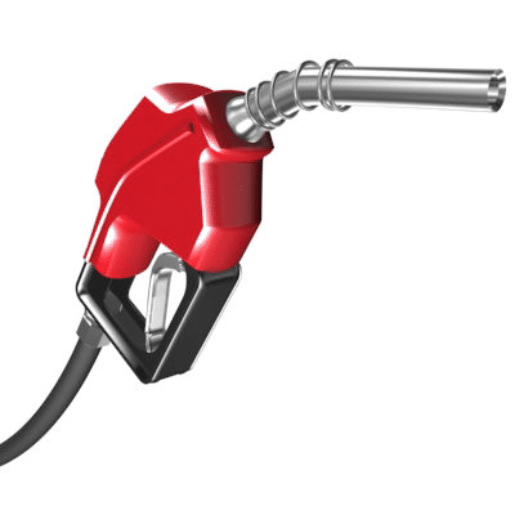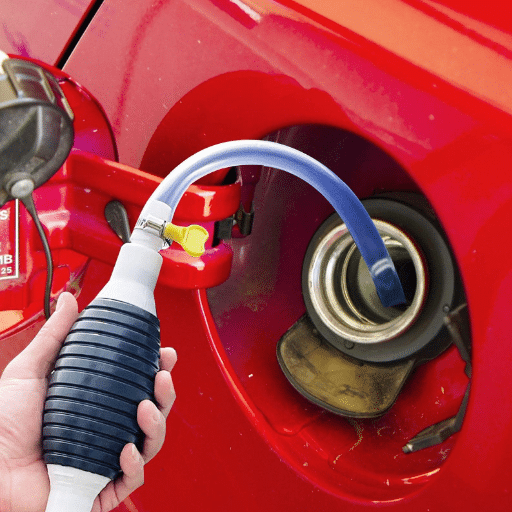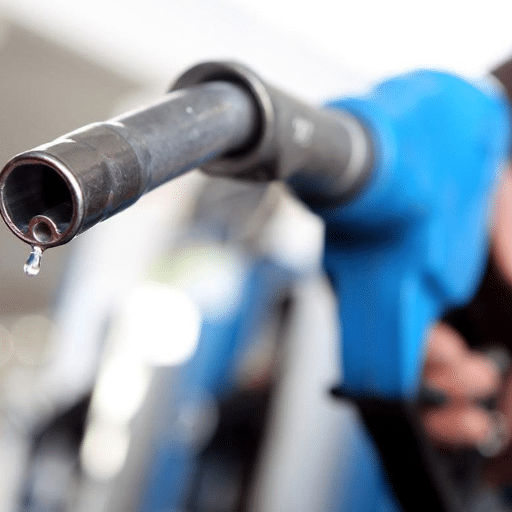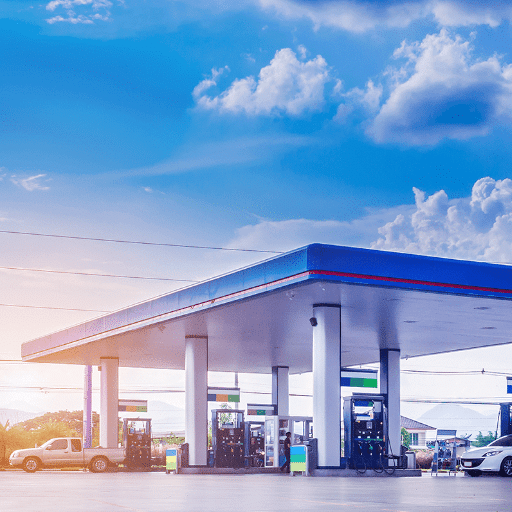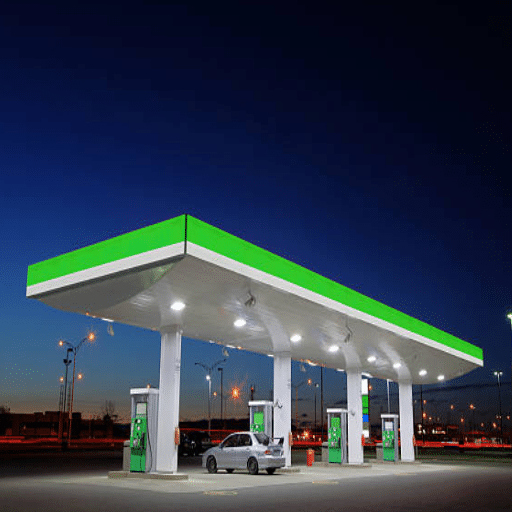Unlike fuel, which is vital to people’s lives, gas stations serve a significant role for travelers, commuters, and residents. But have you thought about how much an average gas station earns? Gas stations earn through fuel sales and convenience store items. In this blog post, I will explore the factors that gas stations face and analyse their revenue. If you wonder how entrepreneurs manage everyday business operations, I will explain the essential things you should know, as well as the profitability factors that affect their businesses.
Understanding Gas Station Revenue
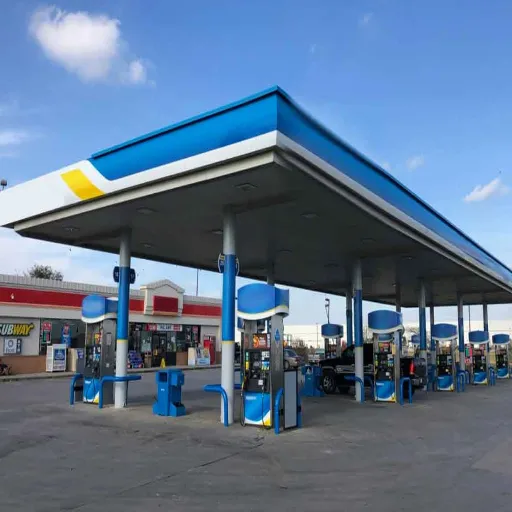
The two primary sources of income for gas stations are the sale of fuel and the sale of stock in the convenience stores. Fuel sales often constitute the most significant portion of revenue and, in the absence of competition, have the potential to reveal the lower profit margins resulting from rising fuel prices. Moreover, sales of snacks, beverages, and other essentials have the potential to contribute significantly to the impressive profitability of convenience store sales. Car washes, fast-food partnerships, and even lottery tickets can serve as additional sources of income. The effective selection of location, proper pricing, and a diverse range of products are what matter in the profitability of a gas station.
$2M – $4M
5% – 10%
40%
What Factors Impact Gas Station Revenue?
Several factors influence the revenue of a gas station, including current operational strategies and market trends. One of the most critical factors is fuel sales, which depend on crude oil prices, regional demand, and the global supply chain. In 2023, gas prices in the United States fluctuated between $3.40 and $4.00 per gallon and are dependent on other factors such as state taxes and the distance to refineries. Although fuel sales account for the majority of revenue, the profit margins for fuel sales tend to be thin due to market competition.
Primary Revenue Drivers
- Fuel Sales: Constitute the majority of revenue but with thin profit margins
- Convenience Store Items: Higher profit margins with markups of up to 40%
- Car Washes: Generate between $6 and $15 per wash
- Lottery Ticket Sales: Additional revenue stream with steady demand
- Fast-Food Partnerships: Can increase profitability by 20% in high-traffic areas
Fuel’s complementary offerings significantly contribute to increasing total revenue. Convenience stores attached to gas stations tend to have higher profit margins. Snacks, beverages, and even prepared foods tend to have markups of up to 40%. Car washes, which use a fee-per-wash system and can generate between $6 and $15, and lottery ticket sales add even more streams of revenue. Stations that have established partnerships with fast-food franchises tend to become 20% more profitable, especially when they are in high-traffic areas.
Location and Market Factors
The location is one of the most critical factors for revenue generation, as a gas station in a city or near a major thoroughfare or a crowded neighborhood is likely to have higher foot traffic. Location can be enhanced through proper competitive pricing, loyalty programs, and strategic marketing, ultimately leading to increased revenue. The EV charging stations, which can meet the heightened demand for consumer services, are helping to transform the industry, along with seasonal behaviors such as the increase in travel from March to April and the change in EV charging demand patterns. There are greater chances of revenue for businesses that diversify their products in the competitive EV market.
Average Revenue of Gas Stations
Gas station revenue varies significantly depending on location, size, and the availability of supplementary services. The average gas station in the US earns between $2 million and $4 million in annual revenue. Fuel sales generate the most significant portion of this revenue, earning a 5% to 10% profit margin. Convenience store sales, on the other hand, provide higher margins and contribute a significant amount to the profitability of a gas station.
Likewise, car wash services, repair shops, and food and beverage outlets are now standard offerings and serve to increase profits. For instance, car washes can generate between $50,000 and $100,000 in annual revenue for mid-sized gas stations. Additionally, EV charging stations have contributed to increased profits, as EV owners are willing to pay premiums for fast charging.
Additionally, changes in fuel prices, local market fuel demand, and operational costs impact the financial results of gas stations. Fuel stations that offer a variety of services and utilize innovative technologies, such as digital payment methods and app-based loyalty programs, tend to experience greater revenue growth. These practices help maintain relevance in the fast-changing energy and retail sectors.
Revenue Streams for Gas Stations
Fuel Sales
Fuel and non-fuel business services attract customers and generate revenue for gas stations. Gasoline sales have traditionally been the primary source of revenue. Even with changes in fuel prices, the fuel itself has a low, stable, and small profit margin in gas stations. For instance, in the United States, the average profit margin on gasoline sales is 2 to 3 cents per gallon, and this further highlights the need to offer additional services.
Convenience Store Sales
Convenience store sales serve as a primary source of revenue for fuel stations. Snacks, drinks, and tobacco products serve as a reliable source of daily income. Convenience store food and drink sales have been reported to constitute over 40% of industry turnover in some markets. Packaged snack foods and fresh-brewed coffee are high-margin products that generate significant profits.
Additional Services
Furthermore, steady cash flow is maintained through car washes, repair shops, and air pumps. Depending on location and service level, car washes operated by gas stations can make $5 to $10 per wash. Loyalty programs and digital payment applications drive further revenue growth through repeat business and the upselling of in-store products.
Electric Vehicle Charging
Emerging Revenue Opportunity
Charging infrastructure for EVs is one of the services that many gas stations are investing in nowadays. This shift in concern may require an initial investment; however, it enables gas stations to serve a larger clientele. EV charge offerings can attract customers who may also purchase other products from the store while waiting for their vehicle to charge. Estimates indicate that the EV charging station market size can grow at a CAGR of over 20% between 2023 and 2030. This is a beautiful investment opportunity for gas stations aiming to expand their business.
Gas stations can prosper and fully utilize the competitive edge that the markets provide by using traditional and new sources of technology services as well as broadening the range of their offered services.
Gas Station Profitability
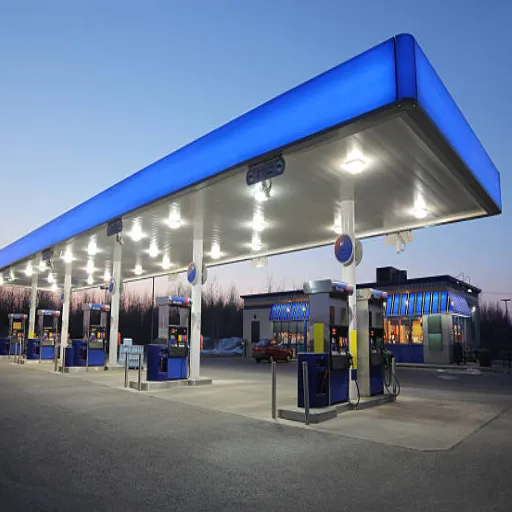
Fuel sales, convenience store offerings, and other services largely determine the financial performance of a gas station. While fuel sales have low margins, their high volume generates steady revenue. Similarly, snacks, drinks, and other convenience items have higher margins. Adding new services, such as EV chargers, car washes, or loyalty programs, also helps profitability. Gas stations’ financial performance depends on having diverse revenue sources and staying updated with consumer trends.
How Much Do Gas Stations Make in Profit?
| Revenue Source | Profit Margin | Revenue Contribution |
|---|---|---|
| Gasoline Sales | 1.4% – 3% per gallon | Primary revenue source |
| Convenience Store Items | 30% – 50% gross margin | High profitability |
| Car Washes | $4 – $6 per wash | Supplementary income |
| EV Charging | Premium pricing | Emerging market |
Depending on their size, location, and the amenities they offer, the profit margins of gas stations differ significantly. Typically, they earn a net profit of about 1.4% to 3% for each gallon of gasoline they sell. This percentage, though seemingly minor, is effectively counterbalanced by the volume of sales. For example, a standard gas station in the United States dispenses thousands of gallons each day, and therefore, despite the meager profit margins on fuel, it garners a consistent income.
Gas stations also rely on convenience store sales to boost their profitability. Snacks and drinks cost a gas station a minimal amount, but they sell them at very significant markups that the literature shows to be around 30 to 50% gross profit margins, as opposed to fuel, where the margin is much smaller.
Gas stations can also increase their revenues by offering additional services, such as automated car washes, electric vehicle (EV) charging stations, and loyalty programs. With the increasing number of electric vehicles, EV charging services are gaining popularity, enabling gas stations to cater to an expanding market. EVs and other non-fuel services not only increase profitability but also help gas stations become less susceptible to fluctuations in gas prices.
Profit Margin Analysis for Gas Stations
For fueling stations, fuel sales, convenience store sales, car washes, and dining all work together to determine the overall profitability of the station. Gas stations typically sell fuel at a loss or near loss — two to six cents on the dollar. Compared to fuel, fuel does a poor job of contributing to a gas station’s overall income. Much more profitable are the snack and fuel retail items, which are sold at twenty-five to thirty percent profit margins.
Electric Vehicle Market Growth
Another emerging trend is the growth of electric vehicle (EV) charging stations. The global market for EV charging stations is growing at a CAGR of 30%, which is a clear indication of shifting priorities for fuel station operators. With the addition of EV charging stations, fuel stations can expand their customer base and simultaneously introduce new revenue streams.
Furthermore, data suggests that escalators, such as automated car washes and advanced customer loyalty programs, can significantly increase profit margins. Revenue for automated car washes ranges between $4 and $6 per wash, and stations experience improved customer retention with properly designed loyalty programs.
Competition is increasing, gas stations are keen to fine-tune their workflows and enhance their supply chains, which in turn leads to a decrease in operational expenses. In addition, profit margins continue to be heavily influenced by region- and country-specific factors, including but not limited to, the price of crude oil and changes in consumer behaviour. Those operators who take on the challenge, change their offerings, and look for out-of-the-box opportunities tend to do well in the new challenges that the industry presents.
Boosting Gas Station Profitability
Increasing profitability in today’s shifting market demands a multifaceted approach. One of the most beneficial strategies includes adding quick-service restaurants, car washes, or convenience stores to the primary fuel offering. In fact, it is reported that as much as 44% of gas station revenue in the United States is generated through convenience store sales, supported by the growth of value offerings through merchandise. Additionally, offering advanced value-added services, such as mobile payments and loyalty programs, enhances the customer base while personalized spending offers increase the average transaction value.
Dynamic Pricing Strategies
Fuel pricing strategies are also pivotal. Gas stations can maintain and increase profitability per gallon by responding to local competition, demand shifts, and even sudden crude oil price changes using dynamic pricing tools. For instance, the use of real-time pricing algorithms has enabled certain operators to increase their gross profits by adjusting prices in response to market changes throughout the day.
Renewable Energy Integration
In addition, the use of renewable energy technologies, such as EV charging stations, not only provides new avenues of income but also fulfils the need for eco-friendly transport solutions. With the electric vehicle industry expected to expand at a rate exceeding 20% annually in the near future, the stations fueling these vehicles stand to gain a new clientele by incorporating the charging facilities.
Operational Efficiency
Finally, the use of sophisticated technology for inventory tracking, such as automated systems, helps minimize inventory loss, avoid stockouts, and simplify the supply chain. Reducing expenses through improved operational efficiency also ensures a better customer experience by consistently offering products and services, thereby assuring their availability.
Gas Station Owner Income

The income of gas station proprietors can fluctuate significantly based on the station’s location, size, and the range of services it offers. The U.S. Census Bureau reported that, as of 2022, the average annual income for gas station owners in the U.S. was approximately $71,000. Yet, this number can rise considerably with additional profit avenues such as car washes, convenience stores, or even electric vehicle charging stations. The supplementary services are essential to the overall profitability of the gas station, as low margins on gasoline are typical.
How Much Does a Gas Station Owner Make?
There are numerous variables that affect the income of a gas station owner. The price of fuel, location, and even operating expenses, as well as additional sources of income, all matter. For instance, gas stations in small towns are often known to perform poorly compared to those in city centers or along main highways. Other services, such as convenience stores, car washes, or fast-food outlets, not only generate additional revenue but also contribute to increasing overall profit margins. Fuel sales typically have a gross margin of 5–7 cents per gallon, which is considered low; however, other sales can help offset this deficit.
Furthermore, rent or mortgage payments, utility bills, insurance, and employee salaries are among the operating expenses that determine the station’s net profit. Professionally managed gas stations tend to employ competitive pricing on both fuel and other items, and offer a variety of services to both in-station and out-of-station customers to increase overall sales. This is expected to increase traffic to the station, and more traffic means more sales. The latest available data from the relevant industry indicates that the total annual revenue of gas station owners in the United States is estimated to be between $60,000 and $150,000. Those closer to the $150,000 mark are more likely to have additional revenue streams, a trend that has become more prevalent recently.
Salary vs. Profit: Understanding Gas Station Owner Earnings
The income of gas station owners is influenced by several factors, including the station’s location, size, management efficiency, and the availability of additional products and services. The operators’ income is frequently calculated as fuel profit. Still, the actual fuel profit is often low, typically around 1-3% per gallon, after deducting post-operational expenses such as wholesale prices, credit card fees, and transportation costs. Along with their fuel profit, many operators also offer convenience stores, car washes, and auto repair services, which come with much higher margins, as well as auxiliary income services.
If the revenue streams are successful, top gas station owners can achieve significantly better earnings, and top performers can earn profits exceeding $150,000 annually, as reported by industry experts. In addition, the final earnings get impacted by the operational costs, including utilities, wages, and franchise fees. In this competitive industry, for continuous profitability, a company must ensure that costs are kept in check and market trends receive the required attention.
Factors Affecting Gas Station Owner Income
Fuel Sales and Pricing Trends
Gasoline stations typically rely on fuel sales as their primary source of revenue. But, the profits generated per gallon are pretty low – around 10 to 15 cents per gallon nationally after taxes and other expenses are accounted for. Several factors, including shifts in the price of crude oil, regional taxes, and in-store competition, can significantly impact revenue. Stations located in metropolitan or high-traffic areas typically have an advantage, as they experience steady demand, which enables more predictable fuel revenue.
Convenience Store Sales
The operation of convenience stores can significantly contribute to gas station profits and, in many cases, generate higher margins than fuel sales. The margins on products such as snacks, soft drinks, tobacco, and basic groceries typically range from 30% to 60%. Moreover, serving premium coffee or hot food can increase foot traffic and improve customer retention.
Accessibility and Location
The location of the gas station has a significant impact on its profitability. Stations situated close to highways, busy junctions, and areas with high population density are likely to experience better traffic. Ease of access, which includes adequate parking spaces, visibility from the main road, and multiple fuel dispensers, can also contribute to an increase in customer numbers.
Additional Income Channels
Owners who run gas stations successfully tend to have more than one source of income. Car washes are one of the most popular additional services, and they tend to have high profit margins. Additionally, offering air pumps, ATMs, lottery ticket sales, and branded promotions also contributes to the overall income. For instance, based on the traffic to the station and the pricing model, car washes can generate between $70,000 and $90,000 in revenue.
Operational Costs and Efficiency
Net income can be substantially improved through the efficient management of operational costs. Several factors, including employee wages, utilities, and equipment maintenance costs, need to be controlled. The use of energy-efficient lighting and equipment not only cuts utility costs, but also the use of automated payment systems cuts labor costs. Proper inventory controls also help minimize stock and waste.
Franchise vs. Independent Ownership
| Ownership Type | Advantages | Disadvantages |
|---|---|---|
| Franchise | Brand recognition, established supply chains, and marketing support | High initial investment, franchise fees (2%-6% of revenue) |
| Independent | No franchise fees, full control over operations | Need stronger advertising and supplier management |
Consumer Trends and Integration of Electric Vehicles (EV)
Gas stations that invest in EV charging stations stand to maintain their clientele and attract others as electric vehicle usage continues to grow. To meet consumer demands for more sustainable options, many stations are also adopting greener technologies and eco-friendly practices.
By employing the strategies above and gaining familiarity with the numerous factors affecting the business, gas station owners can better prepare to ensure profitability and maintain a competitive edge.
Increasing Gas Station Revenue
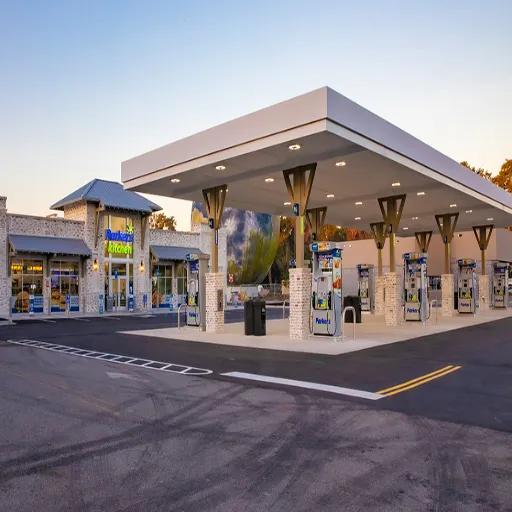
Top Revenue Enhancement Strategies
- Install EV Charging Stations: The emergence of electric vehicles alongside the additional convenience offered by electric vehicle charging stations can serve as an attraction to an even broader set of customers. Moreover, such an addition can position a business as modern and up-to-date.
- Expand Retail Offerings: Boosting sales within the store can be achieved by bringing in snacks and beverages, as well as essential groceries that are in high demand for convenience store retail.
- Offer Loyalty Programs: Customer retention can be significantly enhanced by creating a reward system, thereby motivating return visits.
- Partner with Delivery Services: Increase fueling fleet and foot traffic by partnering with food/package delivery services, as well as fueling fleets.
- Promote Mobile Payments: To enhance customer satisfaction, speed, and efficiency, offer mobile and app payment options.
Utilizing these tactics enables service stations to increase their earnings and better address their clients’ changing needs.
Strategies to Boost Gas Station Revenue
Innovative and customer-centric strategies are required to increase revenue at gas stations. The following strategies combine the best recommendations from the industry for quick and effective implementation:
Increase Convenience Store Offerings
In addition to fresh foods and beverages, add region-specific products to your convenience store’s inventory. Coffee, snacks, and meal combo offers also help increase foot traffic and spur impulse buying.
Launch Loyalty Programs
Create incentive programs that offer cashback or points for subsequent visits. Such programs are beneficial for repeat shoppers, enhancing long-term customer engagement and boosting sales and retention.
Market with Technology
Gas prices and discounts should be prominently displayed with appropriate highlighting. Capture the attention of potential customers with in-store offers and special deals. Utilize social media, location-based services, and mobile applications for promoting products and services.
Provide Additional Services
Car washes, air pumps, or even light automotive repairs expand the service menu. These conveniences increase the number of visits to your gas station. Customers may additionally spend on fuel or retail items.
Adopt Fuel Efficiency Measures
Install state-of-the-art fuel dispensers and promote your premium fuel selection. This upgrade enhances the customer experience and lends credibility to the brand.
Integrating these practices enables gas stations to better satisfy their customers, generate new revenue streams, and maintain their competitive edge in a changing marketplace.
The Role of Car Wash Services in Revenue Growth
To increase revenue at their gas stations, car wash services have proven to be an effective means of doing so. According to data, the income generated from car washes alone can account for approximately 10% to 20% of a gas station’s total revenue. This additional income stream is especially beneficial in times of low fuel sales, as it bolsters total revenue.
In addition to increasing income, car washes also help expand the station’s customer base by offering snacks, fuel, and vehicle cleaning services in a single stop. Fuel stations can efficiently meet high demand thanks to new automatic car wash machines that can serve a large number of vehicles daily. For instance, a station with regular car wash traffic can generate between $500 and $700 per day, depending on the location and traffic volume.
Car Wash Revenue Benefits
- Can account for 10%-20% of total gas station revenue
- Daily revenue potential of $500-$700 for busy locations
- Creates opportunities for upselling fuel and convenience items
- Generates customer loyalty through package deals
- Eco-friendly systems save up to 50 gallons per wash
Car wash packages and membership plans also create opportunities for upselling. Customer engagement typically increases for gas stations that implement loyalty programs or offer discounted car wash and fuel purchase bundles. This encourages repeat business and fosters stronger brand loyalty.
Additionally, for environmentally conscious customers, contactless payment technology and eco-friendly water-saving devices are available. Such machines serve washes with water savings of up to 50 gallons when compared to older systems, addressing the heightened eco-consciousness of users. Eco-friendly devices serve dual purposes by allowing gas stations to serve customers based on demand and by generating additional profits.
Effective Marketing Techniques for Gas Stations
Put Gas Stations on the Map with Social Media Marketing
The right digital tools can increase your visibility and attract more consumers. For one, social media advertisements fuelled by Facebook and Instagram can promote your gas station to precise geographies, demographics, and interest groups. More than half of consumers rely on fuel and convenience shopping comparison tools. Enhancing your station’s search engine presence through PPC ads and local SEO is a great way to ensure your fuel and convenience station is visible to prospective shoppers in the area.
Implement Loyalty Programs
Research indicates that 60% of customers would visit a store more frequently if the store offered a loyalty program. A gas station can incentivize its fuel and convenience item purchases by offering points that can be redeemed for discounts or even free items. A mobile app that tracks and redeems points, as well as offers special deals, would significantly simplify the process and further enhance the loyalty program.
Invest in Professional Branding
Distinctive and consistent branding on the store’s fuel pumps and convenience stores builds recognition and trust among the clientele. Distinct pricing displays, proper illumination, and logo placement, including the fuel pump, aid a gas station to stand out from the competition. Almost 70% of drivers select fuel stations that look clean and neat, which is a requirement in modern society. This reflects trust and higher-quality service to the drivers, according to consumer studies.
Capitalize on Value-Added Services
Additional services, such as car washes, EV charging stations, and fresh food, broaden the customer base. The sales of electric vehicles (EVs) have increased by over 40% in the last year, which has also led to a surge in eco-friendly drivers. By providing charging stations, gas stations can cater to a broader Eco-friendly segment. Additionally, as consumer behavior shifts toward more convenient foods, on-the-go meals with quick, healthy food options in-store increase their desirability.
Community Engagement
Community relations strengthen brand loyalty. Helping schools, sports teams, and organising charity drives or local events helps build a positive image and customer goodwill. More than 80% of people believe that businesses that engage in community activities have a better brand image and even improved sales, according to research.
When petrol stations utilize advanced digital marketing tools, combine them with customer-oriented services, and participate in community initiatives, they create a strong brand image that customers can relate to, visit more frequently, and return to, ultimately improving the business.
Challenges Faced by Gas Station Owners
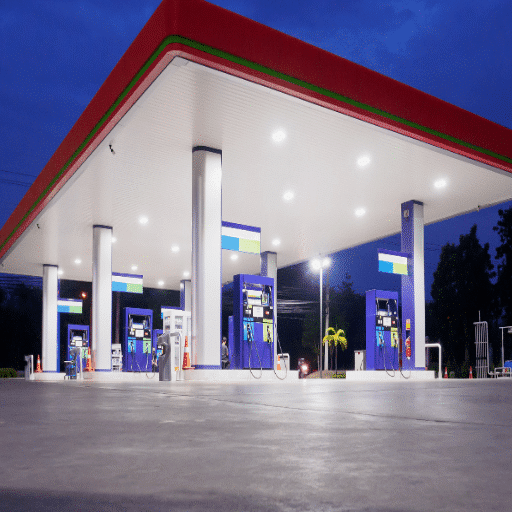
Effective management of fuel stations involves the following challenges:
1. Volatile Oil Prices: The inconsistency of prices makes maintaining a profit margin a challenge.
2. Growing Competition: Fuel stations as well as large retail chains in the vicinity force better pricing and more services.
3. Increasing Operating Expenses: Profitability can be affected by labor, maintenance, and utility expenses.
4. Compliance Regulations: Continuous effort is required to comply with environmental and safety regulations and may involve additional costs.
5. Changing Consumer Demand: A significant portion of the consumer base is looking for different energy alternatives, such as electric vehicle charging, which might entail fresh capital expenditure.
Innovative solutions, combined with a strategic approach, will be required to overcome these issues and achieve long-term success.
Impact of Fuel Price Fluctuations on Revenue
The impact of fluctuations in fuel prices is most strongly felt in the revenues of companies operating in fuel- and transportation-dependent industries. An increase in fuel prices leads to greater operational costs for logistics, courier, and other fuel-driven services that, in turn, lead to shrinking profit margins. For example, the Energy Information Administration provides data indicating that the increase in fuel prices is strongly correlated with the rise in crude oil prices and fuel-linked industries, such as freight, aviation, and public transportation.
Likewise, the reduction in fuel prices allows companies to reinvest in various growth programs or lower the prices of their end products for consumers. The opposite is true for companies engaged in the production and distribution of fuels, as a decrease in fuel prices leads to decreased revenues and lower spending on exploration and development. Geopolitical events, production levels of OPEC member countries, and changes in demand from major economies significantly impact the global oil market, oil prices, and their fuel price derivatives. Companies must have contingency plans in place, such as acquiring energy from multiple sources or hedging fuel price variations, as corporate fuel prices pose enormous risks.
Understanding the Competitive Landscape
To understand the competitive landscape, I examine current trends, study the tactics of major players, and assess new technologies that may disrupt the market. I track consumer behavior, regulatory changes, and world events because doing so allows me to spot opportunities and challenges. This knowledge enables me to make informed decisions based on facts, keeping me a step ahead of the competition.
Managing Operational Costs Effectively
Controlling operational costs is a methodical exercise in finesse and judgment of the expenditure of the business. Initially, one should locate sources of waste through cost analysis and lean management, while ensuring that the value delivered to customers is not compromised. The use of technology, such as automation, controlled systems, and data analytics, should be adopted to enhance precision and minimize tedious manual work. Checking the supplier’s contracts, as well as the offer for the bulk purchase, should be done to minimize procurement costs. Moreover, training employees will enhance their work output and reduce the likelihood of mistakes, which, in the long run, saves money. Evaluating performance through key performance indicators (KPIs), implementing necessary changes, and developing strategies based on the information to achieve a successful outcome ensures continuous development and sustained cost management over a more extended period.
Reference Sources
1. Optimizing Number and Locations of Alternative-Fuel Stations Using a Multi-Criteria Approach
2. Evaluation of the Internal Control System for Inventory at U.D. Nina Usman SPBU
3. Optimization of the Fuel Distribution Business by Application of the Bellman-Kalaba Algorithm
Frequently Asked Questions (FAQs)
Average revenue of a gas station
A gas station generates a significant amount of revenue from the sale of fuels, as well as food and other items in its convenience store. It offers additional services such as car washing. While selling fuel constitutes the primary payment method, gas stations supplement their revenues with convenience items; hence, gas station revenue can vary widely depending on the location and services offered.
What profit margin would a fuel sale provide a gas station?
The profit margin on the sale of fuels is barely enough to feed oneself, averaging just about 5 to 10%. Yet, in some instances, gas stations can actually achieve high profit margins from services like oil changes, car washes, and convenience stores, thereby increasing the overall profitability of the gas station.
What impact does owning a gas station have on overall profitability?
Gas stations can be either entirely unprofitable or very profitable, depending on their location, competition, and ability to generate alternative revenue streams. The better one is at managing, the more lucrative the gas station can be. Services and profit go hand in hand.
What do gas station owners make per year?
Generally, a gas station owner can earn anywhere from $50,000 to $100,000 per year. The size of the gas station and the revenue-generating streams from services can significantly determine the income. Hence, franchise owners might be made differently from owners running independent gas stations.
How do I increase my revenue?
Adding services such as car washes, convenience items, and promotional discounts on fuel sales can increase revenue for the gas station. Additionally, improving customer experience and setting up loyalty programs might direct new traffic to the store and increase sales.
What are the primary sources of profit for a gas station?
Not very surprisingly, the operation of any gas station is profitable through the sales of fuel, convenience store goods, and additional services, such as car washes and maintenance services. Independent gas stations tend to focus more on convenience items, whereas franchise owners can benefit from brand loyalty and promotional schemes.
What is the average profit margin of a net gas station?
The net profit margins of a typical gas station typically range from 1 to 3 percent, which is relatively low compared to other retail businesses. Yet, in concentrating more on the profitable areas, such as convenience store sales, gas station owners can increase their own net profit margin.
How do gas stations generate more money than fuel sales?
Gas stations typically earn revenue beyond fuel sales, including the sale of snacks and drinks, as well as servicing car wash and maintenance needs. These additional streams of revenue can really enhance the profitability of a gas station and serve as an excellent buffer against fluctuating fuel prices.

